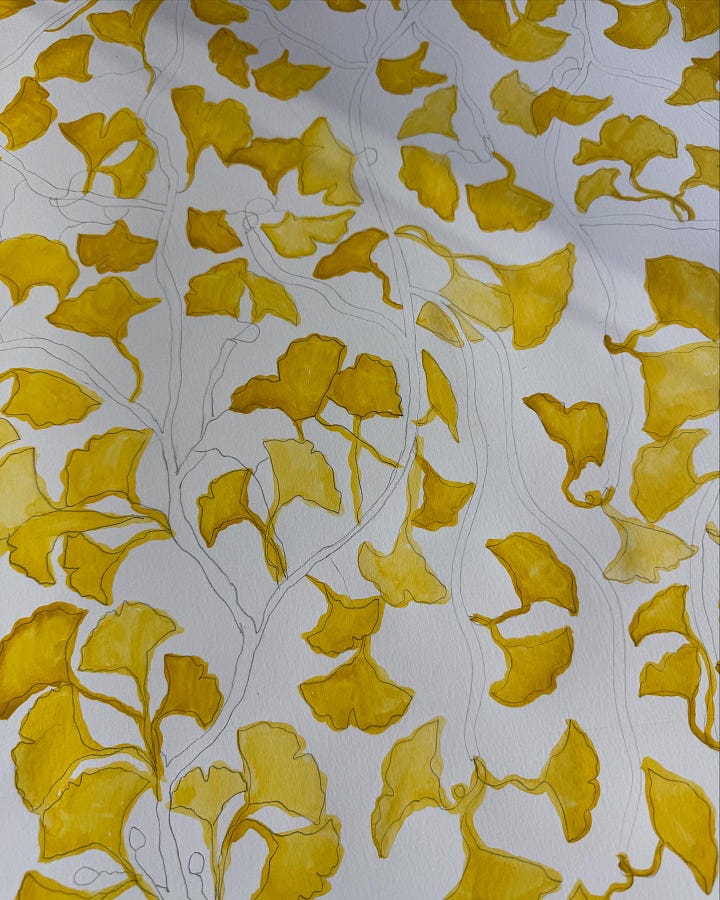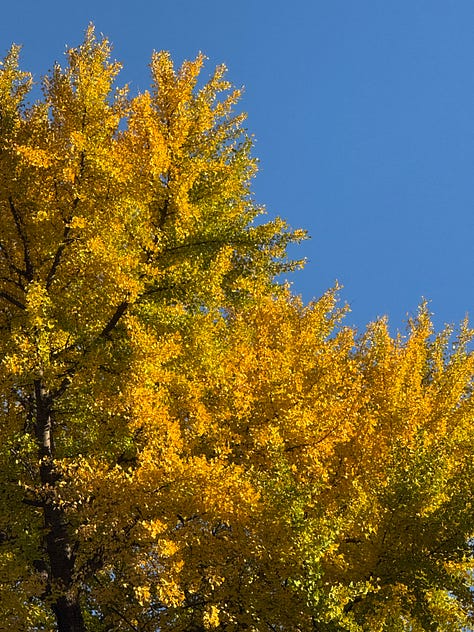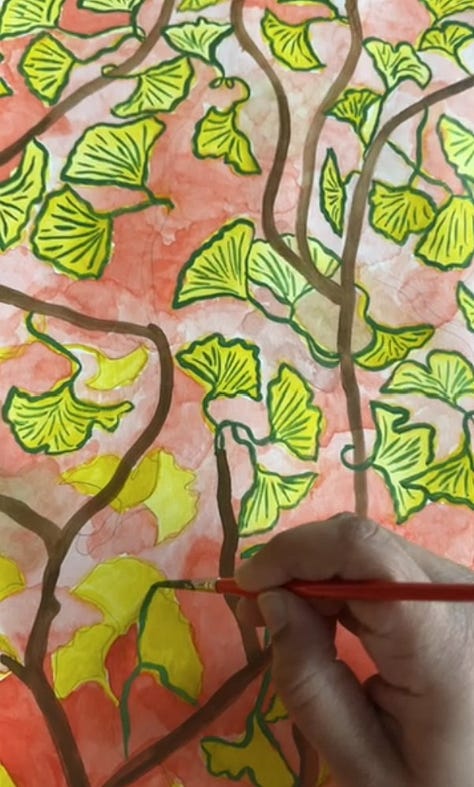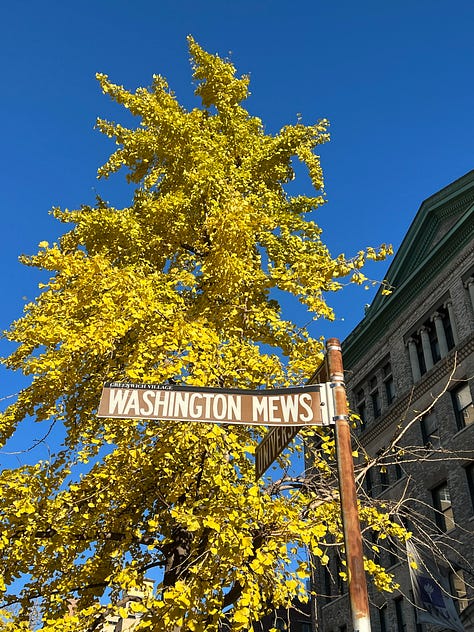Dear Ginkgo
Honoring this ancient ancestor through a meditative painting
I first met the ginkgo in Washington, D.C., years ago, not knowing it would haunt me for a lifetime. It was late fall, the sidewalks littered with its golden fans, little bursts of sunshine against the gray of the city. The streets smelled faintly of its infamous fruit—a sharp, pungent odor that I’d later learn is nature’s way of inviting the wrong kind of guest to dinner. But it wasn’t the smell that caught me. It was those leaves, like delicate fans of an ancient world, scattered across my path as if whispering, pay attention. It didn’t take long before I was looking it up, its name rolling around in my mind like a lyric: Ginkgo biloba. A tree so old it predates flowers, a species standing alone, defying extinction like an act of quiet rebellion. This was no ordinary tree. It was a survivor, and I was hooked.


From that moment, I became a little obsessed. I started scribbling every scrap of information I could find about it, filling my pocketbook with ginkgo facts and folklore like a detective chasing a case. That it shared the earth with dinosaurs, and while the dinosaurs met their fiery end, the ginkgo lived on. That it survived the atom bomb in Hiroshima, sprouting green and strong as if to remind us that life finds a way. That its leaves have graced temples in China and tea tables in Korea, and now fall onto Manhattan’s sidewalks like lost mittens. There’s no other tree like it—literally. No relatives, no cousins, no evolutionary entourage. Just the ginkgo, carrying 200 million years of history on its branches like it’s no big deal. It doesn’t ask for much—just some sunlight, a bit of space, and the freedom to turn every city it touches into a gilded autumn painting.
New York City is full of ginkgos. They line the streets and dot the parks, thriving where other trees crumble under the weight of sprawl and neglect. They don’t make a fuss, but once you know how to spot them, they’re everywhere. Every fall, I’d watch their leaves transform, from summer’s lush green to the yellow of a golden hour stretched out over weeks. Eventually, they’d drop to the ground, blanketing the city like nature’s confetti thrown just for itself. I’d always pause to admire them, wondering what stories these trees might tell if they could speak. What must it feel like to have outlived empires and ice ages, only to end up as a street tree shading dog walkers and remote workers out on a stroll?



At the end of 2024, as the last yellow ginkgo leaf fell to the sidewalk with the gust of winter’s breath, I found myself thinking about it all over again. All those years of fascination, all those notes, all those seasons of watching this ancient survivor. It was time to honor it the only way I knew how. I sat down in my studio, brushes in hand, and began to paint, leaf by leaf. I started with green—bright, vibrant, full of life. Then came the yellows, warm and luminous, the color of endings that feel like beginnings. As I continued to work, I thought about how this tree isn’t just surviving—it’s teaching us how to do the same. A little tough, a little odd, and absolutely unwavering.



Very thought provoking! Your dedication to this unique specimen is very captivating. I had no idea that the Ginkgo was such a special tree. It's a real privilege that we get to see it so regularly.